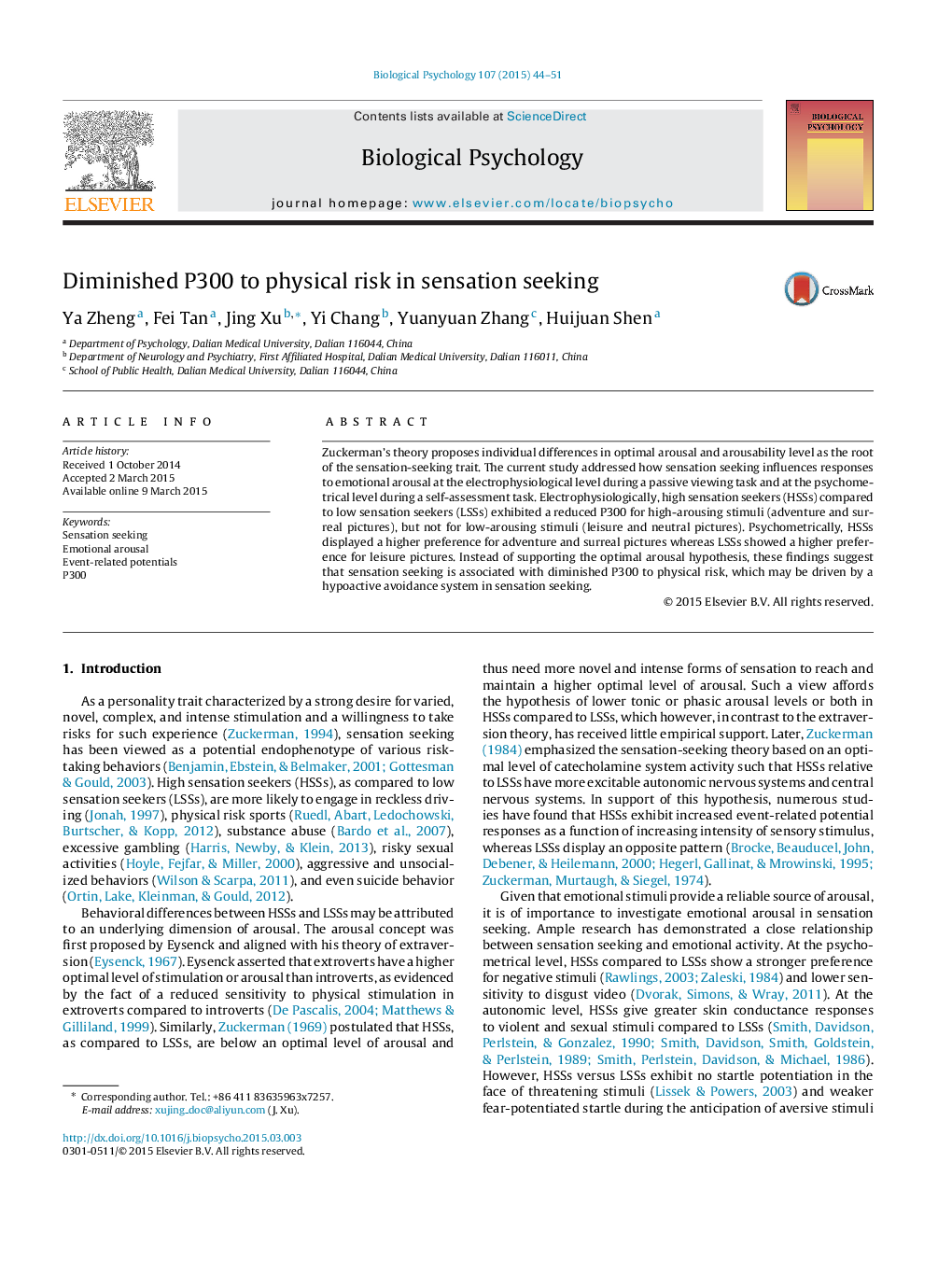| Article ID | Journal | Published Year | Pages | File Type |
|---|---|---|---|---|
| 920861 | Biological Psychology | 2015 | 8 Pages |
•The P300 and LPP varied as a function of emotional arousal.•Sensation seeking is associated with a preference for high-arousing stimuli.•Sensation seeking is linked to a reduced P300 to high-arousing stimuli.
Zuckerman's theory proposes individual differences in optimal arousal and arousability level as the root of the sensation-seeking trait. The current study addressed how sensation seeking influences responses to emotional arousal at the electrophysiological level during a passive viewing task and at the psychometrical level during a self-assessment task. Electrophysiologically, high sensation seekers (HSSs) compared to low sensation seekers (LSSs) exhibited a reduced P300 for high-arousing stimuli (adventure and surreal pictures), but not for low-arousing stimuli (leisure and neutral pictures). Psychometrically, HSSs displayed a higher preference for adventure and surreal pictures whereas LSSs showed a higher preference for leisure pictures. Instead of supporting the optimal arousal hypothesis, these findings suggest that sensation seeking is associated with diminished P300 to physical risk, which may be driven by a hypoactive avoidance system in sensation seeking.
